
Vol. 7, 2020A new decade for social changeswww.techniumscience.com9772668779000ISSN 2668-7798

Decoding of the Story Superimposed of Buddhist Sculpture
unearth from Bharja and testifying its relation to this Silk-
route area of Sirohi District, India
Priyank Talesara
Ancient Indian History, Culture & Archaeology – Madhav University
Thelostworld.in@gmail.com, https://orcid.org/0000-0003-1733-7761
Aniruddh Bahuguna
Ancient Indian History, Culture & Archaeology – APS University
Aniruddhbahuguna91@gmail.com
Abstract Rohida police station recovered an old sculpture, accidentally discovered from the
cemetery of Bharja/Bhaja village. It is a broken bronze Buddhist Idol and very rare sculpture. It
has exquisite Antique beauty with rust in red and corrosion in green. Sculpture of Buddha
seated in Padma Asana (lotus posture) and his hand in Dhyan Mudra (meditation posture).
Buddha is wearing the robe; the robe is decorated with the scene of Buddhacharita story,
superimposed on the visible crust. This Sirohi district has the history of Jainism and Hinduism
only, till the date there is no evidence regarding Buddhism practices in Sirohi district of
Rajasthan. Sirohi is famous from its silk route in the valley, ancient Chandrawati city and
Mount Abu, where thousands of temples of Jainism and Shivanism were built. Objective: what
were the technique and technology used to manufacture sculpture? Where this artefact came
from? What are the main characteristics & features of this sculpture? What carving scene
depicted in this sculpture? Research analysis: For analysis of this sculpture we carefully look
sculpture and magnify scene to compare with the stories of Buddhacharita. Moreover, check
out that this sculpture is indigenous work of ancestral craftsmen or not. Also compare
superimposed stories of Buddha and his life. Scientific method: Buddha sculpture is hollow in
nature but very heavy in weight; Craftsman used the lost wax method to manufacture it. In
ancient time the science behind manufacturing sculpture is very time consuming, first sculptors
need to imagine about the subject, draft and then mould through melting, condensing,
chiselling, hammering and exquisite carving. One of the oldest methods of metal casting
according to Archaeo-metallurgy is bee wax method; this technique is now termed as the lost
wax method. Conclusion: In the end, we like to conclude that in the history of Sirohi
exploration, first time unearths the Buddhist sculpture but we have certain doubts that it
mustn’t belong to Sirohi district. This idol is required for further critical research like dating
and detailed mould-casting technique used in the manufacturing of this sculpture.
Keywords. Buddhist Bronze Sculpture, Mount Abu, Metal Casting, Superimposed Stories.
I. Introduction
According to the police, reported sculpture was found accidentally from Islamic graveyard
of Bharja Village in Sirohi District. In the short pit from where the sculpture was found,
having no evidence of other settlement complexes or antiquity. Possibly it was buried here by
any traveller or robbers for security hide in the land of the graveyard. Also, there is one more
possibility that it came through trafficking which is common in India especially Buddha
sculptures in grey-market. Smuggling of Indian sculptures is in demand in the International
302
Technium Social Sciences Journal
Vol. 7, 302-311, May 2020
ISSN: 2668-7798
www.techniumscience.com

grey-market and with the help of dark-web; it’s very easy to sell antiquities without any
restrictions. In the world, Buddhist sculpture also has global demand especially about the
head of Buddhist sculpture. Whereas trafficking is defined as the cultural property represents
a source of enormous illicit profits for organized criminal groups [1]. The problem of robbery
of cultural artefacts has grown so much that several International registers now exist where
stolen items can be reported and displayed.
This hollow Buddhist sculpture without the head is a very rare one. It has exquisite
beauty engraved or super-imposed over its visible crust. This bronze alloy sculpture is made
up of metals like copper, tin, iron, lead etc. The crust has corrosion of green colour and rust of
red colour in blend. Superimposed stories are related to the Buddhacharita and Jatak Tales.
From the backside, the sculpture has a dent with a crack in the lower middle, a small crack in
the right-hand elbow joint, and the head is missing, a small hit mark near neck shows that
there is a possibility of intentionally removing of head or victim of vandalism. On the
contrary, the sculpture is hollow from inside but it is very strong and heavy in weight.
Figure 1: Front and Backside of unearthed Buddha Sculpture
A. Important scenes of Buddha
According to the Buddhacharita, there is a scene that is a reflection of
Siddharth/Buddha’s birth; he gets heavenly blessings from Lord Indra & Lord Brahma.
Another story developed when Buddha got spiritual liberation and Salvation he reaches
heaven where god Sakra/Indra and Brahma welcome him with drummers and musician. These
scenes are superimposed depicted on the robe of Buddha sculpture.
B. History of Sirohi
It is very difficult to prove the existence of the Buddhism here because in the history
of the Mount Abu, descriptions of only two sects’ mentioned in the ancient literature i.e.
Jainism and Hinduism. Moreover, in our earlier explorations in this region, we only found
Jain shrines and Hindu temple of Shivanism & Vaishnavism, especially in the village of
Bharja we found ancient fortress building which is located near ancient Jain temple [2, p. 15].
303
Technium Social Sciences Journal
Vol. 7, 302-311, May 2020
ISSN: 2668-7798
www.techniumscience.com

Whereas a pillar inscription of Buddhist site in Sarnath (Uttar-Pradesh State), mentioned
donation ‘Borayasikhas Goshthi’ (committee) from Aboda which is identified as Abu [3, p. 7].
But the point should be noted that gateway of Sanchi, was built in Satvahana time and they
were followers of Vaishnavism, in that contemporary time the tradition of donation to
Buddhist sites by Hindu Brahmins or followers are very common. Even we never found the
description of the Mount Abu region in any Buddhist literature like Buddhacharita and travel
documents of Buddhist pilgrimage Huien Tsang, but he visited Bhilmala/Bhinmal, which is
not more than 100 km far from Mount Abu, visited by Huien Tsang in 640 CE. He saw
“decline of the Buddhist monastery of hundred brother monks belonging to Hinyana of
Sarvasti sect” [4, p. 231]. Both Shivanism and Jainism developed here side by side in our
earlier finding we found many inscriptions explaining the value of this region.
1. Chandrawati ancient city was flourished on the bank of the river West-Banas was a
sacred centre of the Hinduism (especially Shivanism) and Jainism religion. It is the
ancient fortress city which is dated from Gupta time to decline phase of Parmar rule [5, p.
36]. The historian Acharya Jinaprabhasuri of 1389 A.D. describes Chandrawati sacred
pilgrimage ‘Vividha Tirtha Kalpa’, also mention ‘the city as full of wealth and existence
of temple Chandraprabhu [6, p. 345]. In 1443 A.D. historian Megha in his text Tirthmala,
describe the prosperity and richness in comparison to Ravan’s Lanka [6, p. 345]. This area
was also remaining centre of pilgrimage for both of the Hindu and Jain Sarvakas. Jain
historian Acharya Siddhasen Suri of twelfth-century refers Chandrawati in Sakala Tirtha
Stotra [6, pp. 344-345]. According to Megha Chandrawati was home of about 1800 Jain
temples, and the most prominent was the temple of first Tirthankar Rishabha [6, p. 345].
In 1446 A.D. historian Somadharama, writes in Upadesaptatika that, in Chandrawati,
there were 999 Shiva temples and 444 Jain temples [6, p. 345]. Whereas historian
Silavijaya mentioned in his text Tirthamala that ‘Chandrawati has 1800 beautiful Jain
temple at the time of Vimala [6, p. 345].
2. Mount Abu is also known for of Dilwara Jain temples, is one of the most sacred hills of
the Jainism. In 1032 A.D., Jain text Brihatkalpsutra of Arya Bhadrabahusvami mentioned
Mount Abu as a pilgrimage site for Jain Sarvakas [7, p. 8] In earlier tradition, it is
recorded in the Viviehatirthmala and Upadesaptatika also has been described as a place of
pilgrimage [7, p. 8]. An inscription of 1369 A.D. found on the door of the chief shrine in
Jivantasvami Sri Mahavira Jain temple [3, p. 8]. The inscription stated that ‘Mahavira
visited the Abu (Arbudhabhumi) region during his travel as a monk’. Site of Dilwara has
been a centre of Hindu and lots of Jain temples from the centuries [7, p. 8]. In ancient time
this region was called Devakulapataka or Devalapataka means the centre of temples [7, p.
8]. Some other pilgrimage sites like Achaleshwar, Lotana, Akhi, Vastanji, Oriya, Gharkav
Mata Ji, Shergaon [8]. Here we also found ruins of the fortified city belonging to
Paramara kingdom. The origin of Paramara related to site Gomukh where guru Vashistha
had performed Yajna in Gomukha. In this sacred ritual (yajna) even gods got to assemble
and from Agnikund (fire-alter ) given birth of four clans of Agnikul Kshatriyas “Parmars”
by Lord Indra, “Chaluky” by Brahma, “Parihars” by Shiva and “Chauhans” by Vishnu [9,
p. 9].
304
Technium Social Sciences Journal
Vol. 7, 302-311, May 2020
ISSN: 2668-7798
www.techniumscience.com

II. Description of Buddha Sculpture
A. Few visible features of the Buddha Sculpture are as follows: -
Height and width of the sculpture is 24.4 CM (survived) x 21.9 CM.
Approximate Survived weight is 4 Kilograms.
Head of Buddha is missing.
Buddha is seated in lotus posture on moon disk placed over Lotus. This meditative
posture is also called Dhyan Mudra.
The most of the body part of the Buddha is covered with the carved robe, only half
part of the right chest and partial part of the right hand is visible.
In the backside, the sculpture has a dent with two large cracks in the centre of the
lower middle part.
Small crack in the right-hand elbow joint.
Bleed marks at joining hands position, and both of the thumbs are missing, possibly
the missing alms-bowl was stacked over the joining hands and having bonds with the
thumbs.
Small crack below the left-hand area on the robe.
The sculpture has an exquisite carving of Buddhist stories. Whereas stories seem to
beautifully highlighted on robe and backside of lotus.
B. Front side scene depicted in sculpture
Most of the scenes of the story can’t be identified because sculpture has corrosion on mostly
surface, only four scenes depicted are as follows:-
Upward scene: the only appearance of Buddha.
Near shoulder: Buddha seated in the lotus posture.
Right leg scene of queen Maya in sleeping posture. Maya is dreaming about
auspicious signs, before giving birth to Siddhartha (Buddha).
Left leg: Buddha telling lesson to his one student who looks like Aananda. Whereas
again seen queen Maya sleeping.
305
Technium Social Sciences Journal
Vol. 7, 302-311, May 2020
ISSN: 2668-7798
www.techniumscience.com



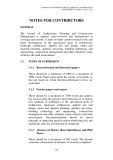

![Dự án xây dựng phòng thí nghiệm sức bền vật liệu [Chuẩn Nhất]](https://cdn.tailieu.vn/images/document/thumbnail/2020/20200519/tocectocec/135x160/5271589858190.jpg)

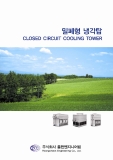

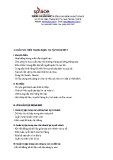

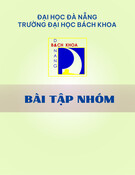
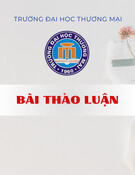






![20 câu hỏi Quản lý dự án phần mềm có đáp án [mới nhất]](https://cdn.tailieu.vn/images/document/thumbnail/2025/20251003/hieu2004haha@gmail.com/135x160/78791759734259.jpg)


![Tài liệu Quản lý dự án: Kiến thức nền tảng toàn diện [chuẩn SEO]](https://cdn.tailieu.vn/images/document/thumbnail/2025/20250910/kimphuong1001/135x160/92631757496585.jpg)



